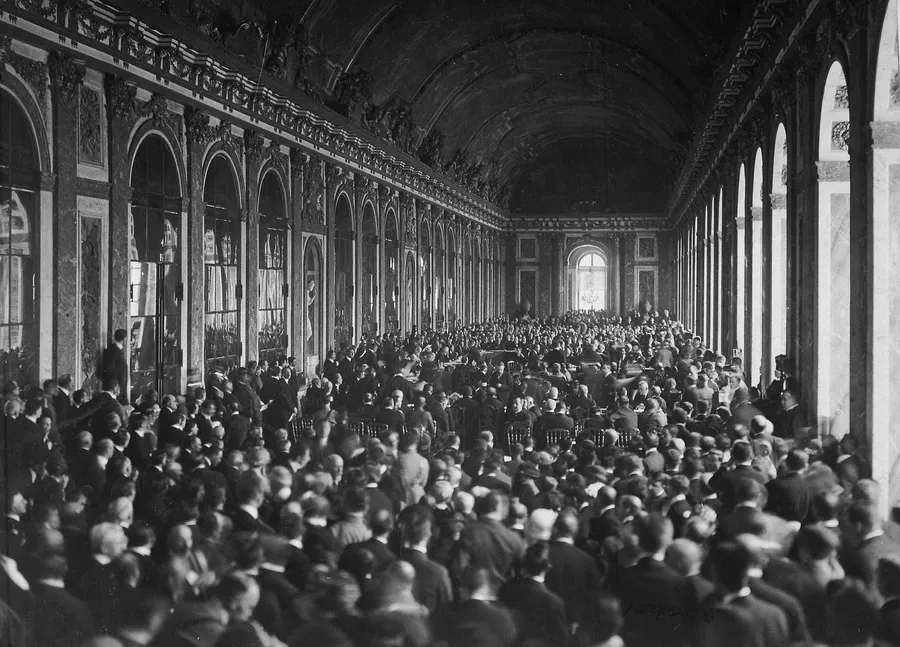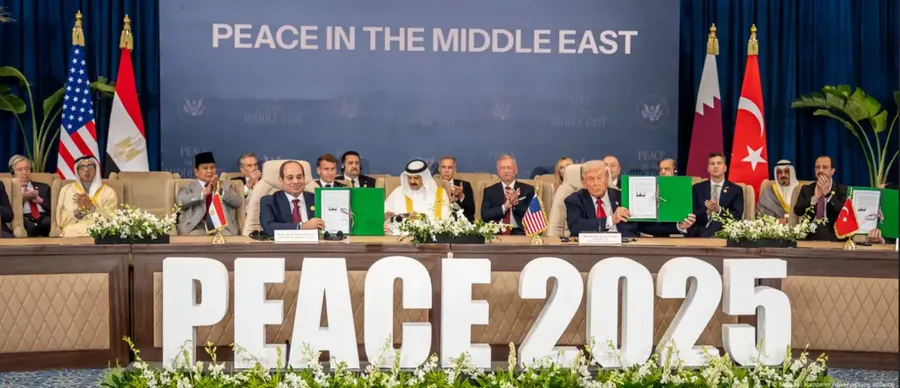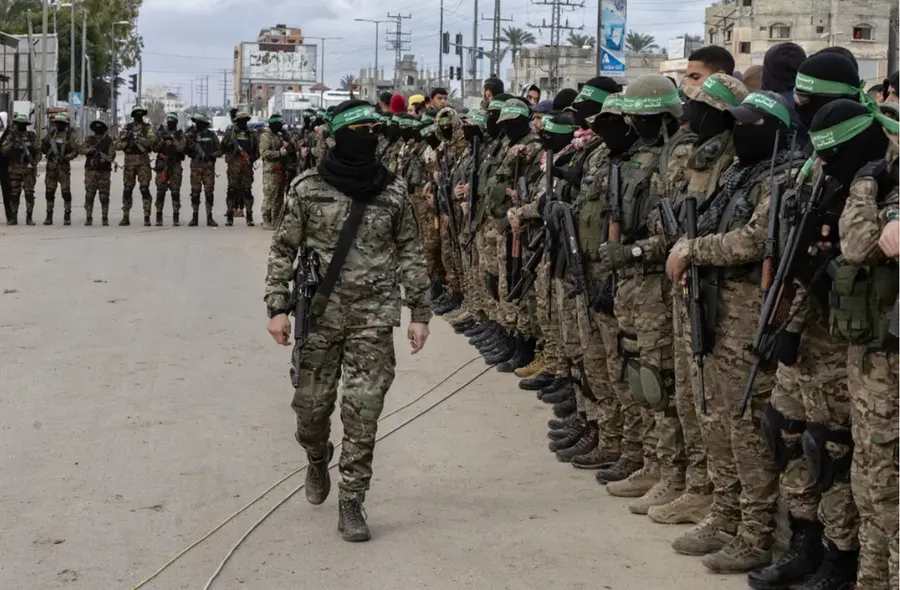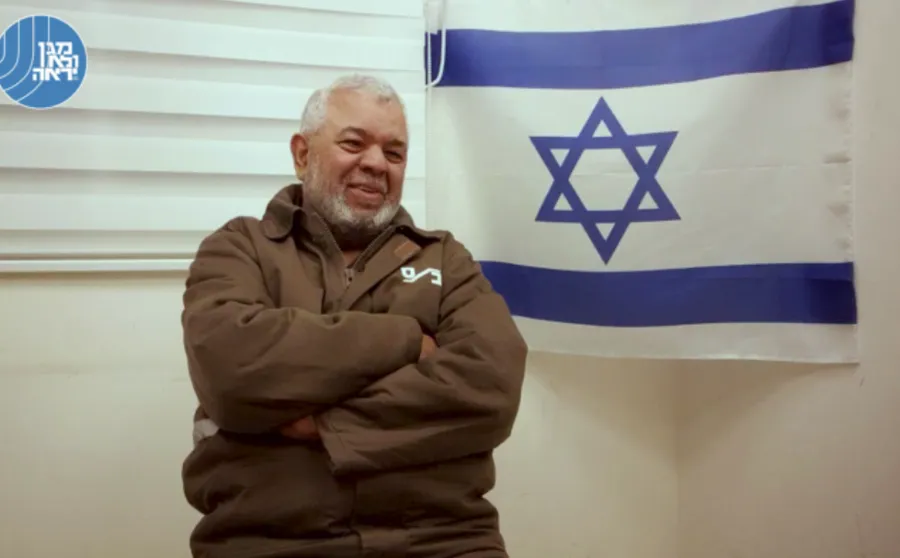Temporary Pause, Persistent Peril: Why the Gaza Truce Is Likely to Fail
by u/DemosthenesRex
The Treaty of Versailles, signed in June 1919, marked the official end of the "War to End All Wars", but failed to produce a sustainable peace. The document, driven by the victors’ desire for punishment and reparation rather than reconciliation, imposed a system of accountability that exacerbated rather than resolved Europe’s fundamental political tensions. Germany’s territorial losses, economic reparations, and the infamous “war guilt” clause transformed what could have been a negotiated peace into a continuing struggle for legitimacy and sovereignty. Though hailed at the time as the dawn of a new international order, Versailles functioned less as a foundation for peace than as a temporary suspension of hostilities, an armistice dressed up in legal formalities. It contained within its clauses the seeds of resentment, political radicalization, and eventual catastrophe, demonstrating that peace treaties which fail to reconcile political realities often serve merely as pauses between wars.

The delegations signing the Treaty of Versailles in the Hall of Mirrors.
The recent ceasefire between Israel and Hamas evokes a similar structural flaw. Like Versailles, it has the form of a political settlement but lacks the substance of a durable resolution. It does not address the underlying causes of the conflict, national identity, territorial control, and political legitimacy, but instead freezes the battlefield while both sides reassess their strategic options. The language of demilitarization, reconstruction, and international oversight mimics the conciliatory tone of postwar diplomacy, yet each provision masks the absence of consensus about who will wield real authority in Gaza. For Israel, the ceasefire is a tool of containment and deterrence; for Hamas, it is an interlude for recovery and reorganization. The agreement’s ambiguity, who enforces peace, who governs, and who disarms, recalls Versailles’ own contradiction: a text claiming to establish order but also incapable of producing one.
In both instances, the logic of peace is subordinated to the logic of power. Versailles imposed a victor’s peace upon a defeated state. The Gaza truce attempts to impose conditional calm upon an unvanquished insurgency. The difference here lies in form rather than substance. The Western Allies once dictated terms to a nation-state within a legal framework of surrender, whereas Israel now negotiates with a non-state actor embedded in a devastated territory. Yet the effect is analogous. A coerced or incomplete peace that does not secure political legitimacy invites future conflict by leaving the central grievances unresolved. The Gaza ceasefire, like Versailles, aims to stabilize without integrating, to police a territory without establishing a legitimate political order. The result is a truce that extends war by other means, maintaining the illusion of peace while both sides prepare for its inevitable breakdown.
Where Versailles produced a Germany humiliated yet defiant, Gaza may yield a Hamas diminished yet ideologically intact. The group’s refusal to surrender or to renounce armed struggle is not an aberration but an expected outcome of a process that treats political questions as security problems. When reconstruction is framed as control, and demilitarization as submission, resistance becomes not merely a tactic but a moral narrative. This dynamic mirrors interwar Europe’s descent into renewed violence, where economic deprivation and political exclusion became the engines of revanche. In the Palestinian context, the international community’s attempt to manage rather than resolve the conflict risks repeating this error, creating conditions under which temporary calm masks structural instability.
Durable peace requires the transformation of political relations, not merely their suspension. The architects of Versailles believed that institutions could enforce peace without addressing legitimacy; the mediators of the Gaza truce appear to share that illusion. Egypt, Qatar and the United States may maintain the external scaffolding of calm, but without an agreed vision of Palestinian governance or Israeli restraint, their mediation will resemble the League of Nations’ futile guarantees, grand in design, hollow in execution. The lesson is not simply that punitive or incomplete settlements fail, but that peace without political accommodation is indistinguishable from intermission. In that sense, Gaza today stands where Europe did a century ago, not at the end of war, but at the threshold of its next phase.

Egyptian leader praised Trump as 'only one' who can bring peace to the region (Michael Kappeler/dpa/picture alliance)
The architecture of the truce rests upon tenuous political incentives rather than mutual trust. Israel views the pause as an opportunity to consolidate its operational gains, manage domestic dissent, and reassess military objectives without conceding strategic depth. Hamas, meanwhile, interprets the ceasefire as a reprieve allowing it to preserve organizational continuity and political relevance after catastrophic losses. The asymmetry of intent, one side seeking containment, the other survival, renders the ceasefire inherently unstable. Each party perceives the agreement not as an endpoint but as a temporary alignment of exhaustion, shaped by immediate tactical necessity rather than long-term transformation.
Underlying this fragile balance is a historical pattern that has long defined Israeli-Palestinian conflict management. The cyclical reproduction of “no war, no peace.” The truce’s success depends not only on cessation of hostilities but also on the enforcement of terms that both sides privately consider provisional. The requirement of Hamas’s demilitarization, for instance, is viewed in Jerusalem as a precondition for genuine peace, yet in Gaza as an existential threat to the organization’s survival. International mediators have opted for ambiguity, deliberately blurring timelines and enforcement mechanisms, to maintain the illusion of progress. This ambiguity, however, creates a structural weakness by embedding mistrust into the very framework of peace. Rather than eliminating the drivers of violence, the ceasefire institutionalizes them under a temporary administrative regime, where power remains contested, sovereignty undefined, and reconstruction hostage to political calculation.
What emerges, therefore, is not a sustainable peace but an interim arrangement reflective of the geopolitical constraints surrounding it. Israel’s security doctrine still privileges deterrence over reconciliation. Hamas continues to treat warfare as a political instrument rather than a moral failure. The mediating states, each with divergent strategic interests, lack the coercive leverage to enforce compliance or the political will to impose finality. The result is an equilibrium of weakness, not stability. A ceasefire designed to prevent collapse, not to cultivate peace. In this sense, the Gaza truce joins a long lineage of armistices and ceasefires which freeze violence without resolving its causes, maintaining the illusion of calm even as the conditions for renewed conflict accumulate beneath the surface.
The ceasefire agreement’s viability rests on the question of enforcement, a concept that in Gaza’s context has historically been more rhetorical than practical. The demilitarization of Hamas, which Israel and the United States have advanced as a cornerstone condition, is less an implementable policy than a strategic aspiration. Unlike the formal surrenders that follow state-on-state wars, the disarmament of a militant organization with deep local roots and ideological cohesion requires not only coercive capacity but legitimacy, both of which are lacking. The proposed model of phased demilitarization under international supervision mirrors previous post-conflict frameworks, from the Lebanese Taif Accord to the disarmament efforts in Northern Ireland, yet Gaza’s territorial isolation and absence of a functioning state apparatus render such analogies tenuous. The primary enforcement problem, therefore, is that no actor possesses both the means and the mandate to compel compliance, leaving demilitarization as a declarative condition rather than an enforceable mechanism.
Responsibility for peace enforcement in Gaza further exposes the structural contradictions of the truce. The agreement presupposes an intermediary capable of maintaining order without appearing as an occupying force, a paradox that none of the plan's backers can easily resolve. Egypt’s intelligence services, though central to ceasefire mediation, lack the political legitimacy to police Gaza’s internal factions. Qatar, while influential in financial terms, is constrained by its dependence on U.S. and Israeli goodwill. The Palestinian Authority, rhetorically posited as the eventual administrator, remains widely discredited among Gazans and lacks the security apparatus to govern without Israeli backing, a dependency that undermines any claim of sovereignty. Consequently, the enforcement framework is predicated on a coalition of actors whose interests diverge more than they converge, ensuring that peacekeeping will oscillate between coordination and paralysis.
The operational dimension of governance transition compounds these enforcement dilemmas. Even if Hamas were to concede some administrative control, its network of social institutions, schools, charities, and local councils, would continue to shape the daily lives of Gazans, embedding its influence in ways that resist external oversight. Israel’s insistence on security vetting for any civil authority introduces a second-order constraint. Governance becomes contingent upon Israeli threat perception, which fluctuates with domestic politics. This dynamic recalls earlier paradigms, where cessation of hostilities produced neither stability nor resolution but a managed liminality serving short-term security interests. The truce, therefore, institutionalizes a status quo in which enforcement is performative, governance is provisional, and demilitarization remains aspirational, conditions that suggest not the end of conflict but its procedural suspension.

Hamas fighters in Deir al-Balah, central Gaza, in February. (Saher Alghorra for The New York Times)
One of the most formidable obstacles to the ceasefire’s durability lies in the enforcement and governance structure proposed for Gaza. The truce stipulates a phased demilitarization of Hamas and the gradual transfer of administrative control to a yet undefined Palestinian Authority, potentially a reconstituted Palestinian Authority or a multinational Arab oversight mechanism. However, the ambiguity surrounding both enforcement and succession invites the same strategic vacuum that fueled Hamas’s rise in 2007. Arab states, while nominally committed to stabilizing Gaza, possess limited coercive leverage and divergent strategic aims. Any governance model that excludes coercive legitimacy, that is, the monopoly on violence, risks collapsing into what some Israeli analysts have called “Lebanonisation”: a pseudo-sovereign enclave with diffuse authority, resilient militancy, and chronic instability.
Israel’s insistence on Hamas’s full disarmament reveals the imbalance of the current truce’s expectations. While Hamas is asked to relinquish its defining capability, Israel maintains its operational freedom of action, including surveillance and limited incursions. This imbalance is politically unsustainable, not only for Hamas’s internal factions but also for any Palestinian body tasked with administering Gaza under Israeli oversight. Historically, such arrangements, from South Lebanon after 1982 to post-war Iraq’s Sunni regions, have produced governance without legitimacy, where local authorities function as intermediaries rather than agents of sovereignty. The truce thus resembles a provisional armistice rather than a durable peace framework.
The practical question, then, is not merely who governs Gaza, but under whose mandate and with what legitimacy. If Israel retains veto authority over Gaza’s security apparatus, any Palestinian governance entity will be perceived domestically as an extension of occupation. Conversely, if Arab states or international monitors assume the role of guarantors, they risk entanglement in a conflict whose unevenness defies arbitration. The international actors most capable of imposing structure, namely the United States and Egypt, remain politically constrained: Washington by domestic skepticism toward nation-building, and Cairo by its aversion to reabsorbing Gaza. The result is a contradictory arrangement in which governance becomes an exercise in crisis management rather than statecraft.
The question of governance in postwar Gaza also remains a question in the current ceasefire arrangement. The agreement’s call for the progressive handover of civil administration to a reconstituted Palestinian authority or some hybrid technocratic body assumes a baseline of institutional coherence that no Palestinian entity currently possesses. Neither Fatah in Ramallah nor Hamas in Gaza has the legitimacy or capacity to govern a war-shattered enclave under international supervision without becoming a proxy of the external powers underwriting the truce. The very mechanisms designed to stabilize Gaza, such as joint policing or phased reconstruction, risk becoming flashpoints for renewed contestation if the chain of command is ambiguous or divided along factional lines.
The practical mechanics of transferring control are therefore as much about narrative as about power. Who will be seen to rule Gaza, and under whose mandate? The demobilization of Hamas’s armed wing, a precondition for any durable political order, cannot be monitored without a credible enforcement body, something neither the UN nor regional states have yet offered to provide. The handover, in other words, is not merely a bureaucratic transition but a test of whether Gaza can exist as a political organism distinct from the conflict that defines it. Without clarity on authority, enforcement, and legitimacy, governance will remain a fiction sustained by fiat rather than by any sovereign reality on the ground.
Israel’s internal political divisions complicate the maintenance of the ceasefire and render any coherent postwar policy toward Gaza improbable. The Israeli war cabinet and military establishment appear increasingly disjointed from the political imperatives of Prime Minister Netanyahu’s far-right coalition partners, who reject compromise and view the truce as a temporary expedient rather than a strategic necessity. Senior military officials, mindful of operational exhaustion and diplomatic isolation, have urged a transition toward a sustainable end state in Gaza, yet this pragmatic posture collides with the ideological rigidity of coalition hardliners who equate restraint with weakness. The resulting policy incoherence weakens deterrence and invites renewed escalation by signaling to both domestic and foreign actors that Israel lacks a unified strategic vision.
Hamas, for its part, has likely internalized critical lessons from the ceasefire process and hostage exchanges, recognizing that asymmetric warfare remains a potent instrument of political leverage. The release of captives under international mediation demonstrated to Hamas that even a militarily inferior actor can compel diplomatic engagement from a superior adversary by sustaining psychological and humanitarian pressure. Such outcomes reinforce the organization’s strategic calculus that limited tactical concessions can yield disproportionate political gains. In the short term, this logic disincentivizes unconditional surrender and in the long term reaffirms the insurgent’s conviction that survival, rather than victory, constitutes success.
Internally, however, Hamas does face fractures that threaten its cohesion and capacity to negotiate. The divergence between its political bureau abroad and its military leadership within Gaza has widened under the strain of continuous warfare and catastrophic humanitarian conditions. Leaders outside Gaza, notably those based in Doha and Beirut, emphasize political survival through negotiation, whereas commanders in the Strip prioritize symbolic resistance, even at ruinous cost. This duality mirrors the structural tension that once beset the PLO. The disjunction between exiled leadership and embattled fighters undermines strategic coherence. As Gaza’s infrastructure collapses and civilian suffering deepens, the legitimacy of Hamas’s rule erodes, yet the organization’s authoritarian mechanisms, rooted in fear and ideology, sustain its dominance, ensuring that fragmentation does not yet yield moderation.

Former Hamas communications minister Yousef al-Mansi heavily criticized the current leadership of the terror group in Gaza as a group of “crazy people” led by Yahya Sinwar, in footage of his interrogation published by the Shin Bet security agency in December of 2023. (Shin Bet)
The ceasefire exhibits many of the structural weaknesses seen in other post-conflict arrangements across time and space, particularly those that attempted to impose stability without addressing the underlying stumbling blocks to political legitimacy. Much as Hezbollah emerged from the Lebanese Civil War as both a militia and a political entity, Hamas may survive the Gaza war as a residual authority, stripped of conventional power but strengthened in its narrative of endurance. Historical precedents, from the 1982 Israeli withdrawal from Lebanon to the drawn-out counterinsurgency in Iraq, reveal that demilitarization imposed by force rarely endures absent a parallel process of political incorporation. The lesson is not that military victories are futile, but that strategic dominance, when unaccompanied by a credible political horizon, tends to incubate the next round of resistance.
A sustainable framework must reconcile Israel’s demand for enduring security guarantees with the necessity of Palestinian political agency. This balance cannot be achieved solely through external mediation or coercive disarmament. Rather, it requires the creation of a governing authority in Gaza that is both politically legitimate to Palestinians and operationally acceptable to Israel and its partners. The current proposals, ranging from Arab-led transitional administrations to U.S.-brokered multinational oversight, suffer from an overreliance on external actors and an underestimation of local resistance dynamics. Policymakers should heed the lessons of Bosnia, Iraq, and Lebanon. Outside powers can enforce a ceasefire, but they cannot impose governance without a foundation of domestic legitimacy. Any reconstruction or security architecture that marginalizes Palestinian participation will ensure Hamas, or a successor movement, remains the de facto power broker in Gaza’s political landscape.
The current truce may slow the tempo of violence, but it does not constitute peace. Israel’s internal divisions, the fragility of its governing coalition, and Hamas’s enduring ideological framework each work against the emergence of a stable postwar order. Absent a coherent political settlement, the region will remain trapped in a self-perpetuating cycle of siege and reprisal, mediated intermittently by foreign powers with competing agendas. The international community’s challenge is therefore not only to maintain the ceasefire, but to transform it into a mechanism of political transition, something neither Oslo nor subsequent initiatives achieved. The durability of peace will depend less on weapons inspections or border controls than on whether either side can imagine coexistence as something more than tactical necessity. In that sense, the most significant battlefield remains the political imagination of both peoples, which, for now, remains constrained by the habits of war.